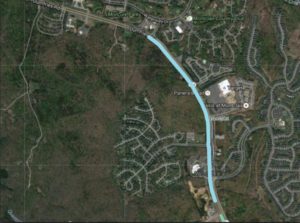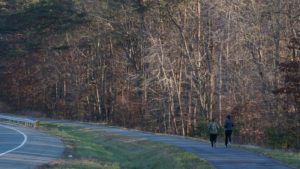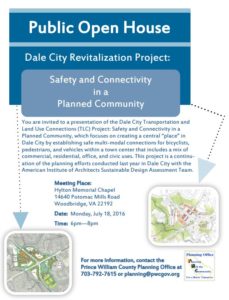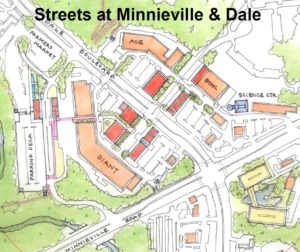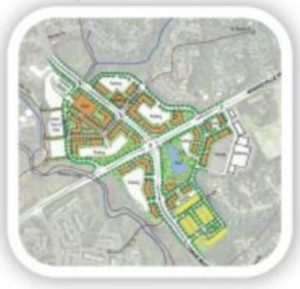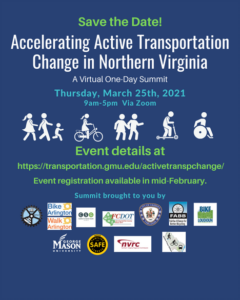
Tag: walking (Page 1 of 2)
I always find it interesting when talking to people about traffic crashes and fatalities, they seem to be resigned to the fact that there will always be carnage on our roads. But if you ask them how many traffic fatalities would be acceptable in their own family the answer is always zero. So why do we have this big disconnect in accepting the status quo for traffic deaths? When a plane, or train, crashes there is high visibility coverage, and much discussion about why it happened. However, when one of the more than 115 people in the U.S., and Canada, die each day on our roadways, there is very little response from the media.
To make matters worse, in 2016 the number of people killed on our roads spiked upward, with a disproportionate effect on people walking and biking. Have we decided that it is just part of the cost of mobility, a cost that has resulted in an estimated 2 million walking, biking and driving deaths in the U.S. from 1945 to 2015, or are we willing to make changes?
Vision Zero is a program to reduce the number of traffic deaths and severe injuries to zero. Is this a worthwhile goal? A lot of people think so, and already cities elsewhere have saved numerous lives as they get closer and closer to the goal. Watch this video and decide for yourself how many traffic deaths are acceptable.
The Washington Area Bicyclists Association hosted the DC Vision Zero Summit on Friday, March 31. DC has a goal of zero traffic deaths by 2024 and they have made great strides in moving towards achieving their goal. Vision Zero DC is a collaborative effort with transportation, health, police, advocacy groups, government officials, and community members working together to reduce crashes that result in fatalities and severe injuries. Mayor Bowser emphasized during her presentation that this has to be a regional effort. This makes sense as the population of DC doubles during the workday with many people driving from suburbs to the city for work.
The epidemic of deaths from traffic crashes is a public health issue. Greg Billings from WABA opened up the summit and was followed by Dr. Sarani from GWU Hospital, Center for Trauma and Critical Care, Dr. Yang from AAA Foundation, and Emiko Atherton, Director of the National Complete Streets Coalition.
Emiko’s presentation resonated with me in that the design of our streets is critical to reducing death and injury. The National Complete Streets Coalition Dangerous by Design 2016 effort takes a closer look at the alarming epidemic of people walking getting killed in traffic crashes on our streets. The study includes a socio-economic analysis of the people who are most at risk, and for the first time also ranks states by their danger to pedestrians.
Having been hit by a car while riding my bike, having spent time in a trauma ward, and then several months recovering, I know firsthand how an unsafe transportation network effects health. I was happy to see a number of health professionals in attendance and speaking at the summit. It is critical going forward that transportation engineers and planners work with public health officials to design livable communities with sustainable transportation options.
The panel session discussions included
- Opportunities for Cross-jurisdictional Cooperation
- Vision Zero and High Risk Users
- Public Health Case Studies
- Vision Zero and Public Health
- Human Impacts of Traffic Fatalities
- Vision Zero and Enforcement
- Winning over the Public to Vision Zero
- Infrastructure: Designing Safe Streets
- Driver Training and Accountability
http://www.waba.org/vision-zero-summit/
For my part, I would like to see better infrastructure design that provides safe access for all, but especially people walking and biking. Speed limits need to be lowered so that when humans make mistakes vulnerable roads users do not have to suffer the consequences. Road design needs to take in account human behavior and create safer space for all. The automotive industry and the technology industry need to work together to install devices in vehicles to reduce the increasing issues of distracted and drunk driving. Stakeholders need to be included in the community planning process. People of color, and older adults, are over represented among pedestrian deaths, and as such should have a larger voice in the conversation. The best solution might be to get more people out of cars. Using active transportation and transit is much safer than driving, and better for your health.
What are some of the ways that you can start making a difference?
Talk to your elected officials about infrastructure design focused on reducing road user conflict, making it safer for people to walk and bike, https://smartgrowthamerica.org/program/national-complete-streets-coalition/
Take the World Health Organization pledge to slow down while you are driving, https://www.unroadsafetyweek.org/en/home
Check out Virginia’s driving laws to catch up on recent changes, such as the three foot passing law, http://www.bikearlington.com/pages/pal-safety-on-our-streets/virginias-3-foot-passing-law/
The media and government agencies need to stop victim-blaming vulnerable road users. People walk and biking have a right to navigate the transportation network safely. Every type of traveler makes mistakes. People walk out into traffic while texting. Drivers text while driving, drive drunk, or speed. Bicyclists run stop signs. We need to design our roads for the most vulnerable users as people walking or biking are not surrounded by a 3,000 lb steel personal pod with air bags. Remember that everyone is traveling to their destination outside of a car at some point in time during their travels. The important distinction is which kind of traveler has the biggest potential to kill & maim. And that our roads are designed such that mistakes like texting & driving can kill.
Vision Zero, or zero traffic deaths, is a goal that we should all want to achieve. Americans need to make it personal, and make the choice to slow down and yield to life. No one wants one of their family members, or wishes it on any other family, to be killed in a traffic crash. If transportation professionals, public health professionals and government officials work towards designing and building safe infrastructure, and people use our roads with the perspective that everyone will be missed by someone, we can work towards achievement of the goal to make it safe for everyone using our transportation network.
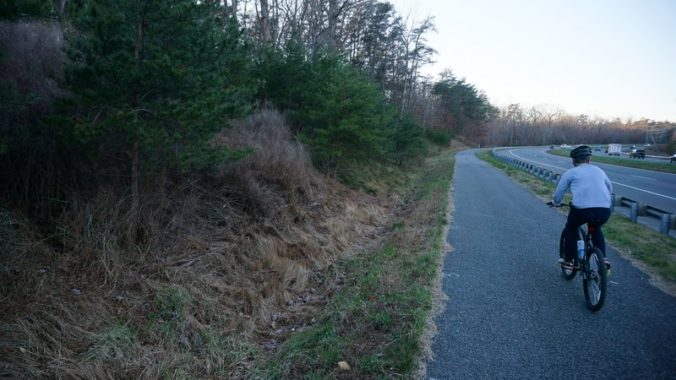
Route 234 Trail to be Extended
The Route 234, Dumfries Rd, bicycle and running trail is set to be extended from its current Eastern end point at Golf Club Dr, the main entrance to Montclair. The project will extend the trail for more than an additional mile, past the Brittany Residential Community down to Talon Dr just past the 7-Eleven. The trail extension will link Montclair, Brittany, and Four Seasons communities to Fortuna Plaza enabling thousands of people to bike and walk to shopping and restaurants that are currently accessible only by car.
The project will expand options for outdoor activities in the area, connect more people to the unofficial North entrance to Prince William Forest Park (near Waterway Dr), and improve access to a number of PRTC bus stops along Route 234, making it safer to walk or bike to transit in this area of the county.
Construction of the Route 234 trail extension should begin next year and is planned to be completed by Spring of 2018.
Future Plans.
Prince William County DOT has plans for a future extension that will complete the trail all the way to Route 1, Jefferson Davis Highway. The completion of the trail to Route 1 is not yet funded, but PWC DOT has worked with the regional Transportation Planning Board (TPB) to get the project on the unfunded pedestrian and bicycle priority projects list to receive funding as soon as it is available.
The Google Map below shows the new trail section being constructed (in purple), and existing sections of the trail (in green). Lines in red in the map are future potential projects.
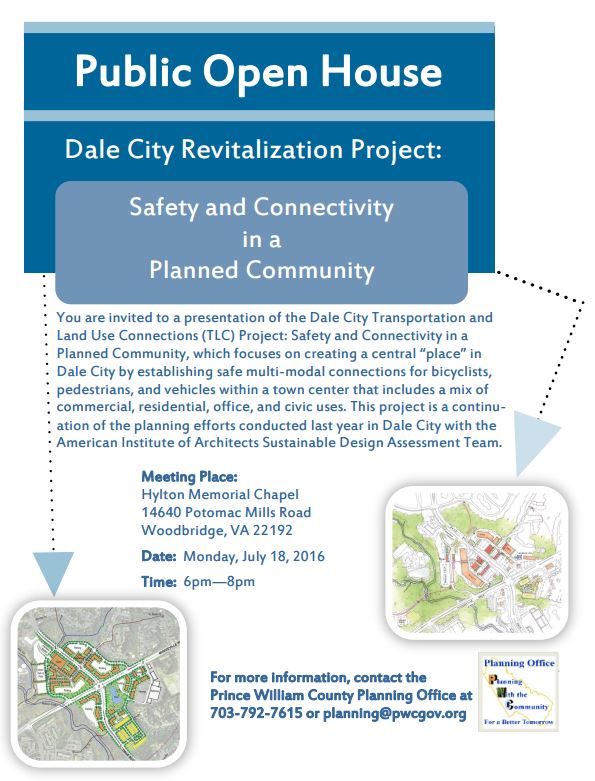
Dale City Revitalization Project Public Open House
Prince William County is holding a public open house for a presentation on the Dale City Revitalization Project at the Hylton Memorial Chapel, 14640 Potomac Mills Rd, Woodbridge, VA on Monday 18 July, 2016 from 6:00 – 8:00 PM. The presentation will focus on suggested improvements for revitalization of the Dale Blvd-Minnieville Rd area in Dale City that have been developed this year, with community input.
The Dale City Revitalization Project is a continuation of the planning efforts initiated by the Prince William County Planning Office beginning with last year’s American Institute of Architects (AIA) Sustainable Design Assessment Team (SDAT) report (link to report here). Issues identified in the original SDAT report include developing a sense of place for Dale City, addressing transportation deficiencies such as a lack of sidewalks, bike paths and connections to neighborhoods, revitalizing run-down commercial properties, and adding genuine community spaces. The SDAT report suggested a focus on two areas, the Dale Blvd-Maple Dale intersection, and what they termed, The Streets at Minnieville and Dale.
The County successfully submitted a proposal for a Metro Washington Council of Governments (MWCOG) grant for a Transportation and Land Use Connection (TLC) Project that has funded further planning work on “The Streets of Minnieville and Dale” design concept. The open house presentation will include details developed from this new planning project that were shaped through a process of community input.
The Prince William County Planning Office contact for the project is Ryan Foster, Community Development Manager. He can be reached by phone at 703-792-7359 or [email protected]
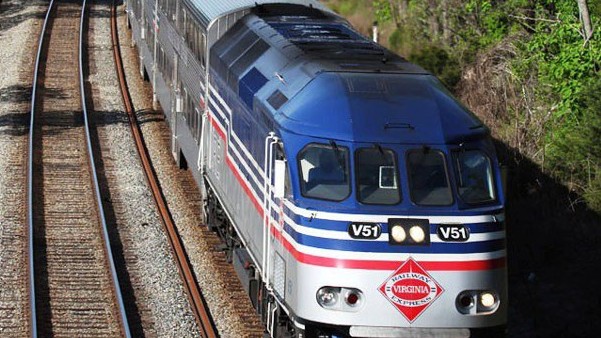
Active Prince William, Promoting Options for Sustainable Transportation and Healthy Living
Back in the day it was “drive a Chevrolet and see the USA”, as the ad indicates cars were promoted for the freedom they offered. Now flash forward to your trip to work today as you sit in traffic waiting and waiting, and ask where is that freedom of movement? Do you want more freedom over your travel to work? Do you want to improve your happiness, want to add quality years to your life, want to save money, and reduce your stress? Do you want a better quality of life for yourselves and your children? If the answer is yes, what are you waiting for? Give your car a break and try a different mode of transportation, increasing the amount of time you walk, bike, or take a bus.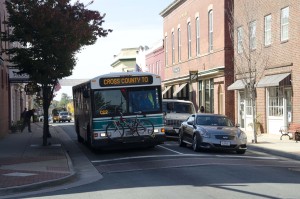
Active Prince William is a non-profit group focused on improving availability of transit options and quality of transit infrastructure within Prince William County. We encourage people to try different options versus driving to work, school and for other errands.
This is not an all or nothing approach. Try a new way of getting to work, school or other destinations at least once a month to see how it can make a positive difference in your life. People who take transit, walk or drive to work indicate a higher level of happiness. If you are on transit you have time to check out your smartphone (legally), read, or even take a nap. If your children walk or bike to school they may exhibit greater attention in the classroom, higher self-esteem, and get more physical activity on average.
Sedentary behavior is on the rise and time spent in cars adds to this by sitting for 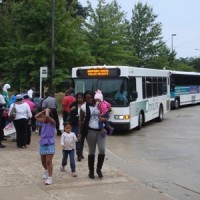 extended periods of time in traffic. Research shows that this increase in sedentary behavior is leading to a shortening of life spans. Wait you say we can just add another lane or two. Research indicates that adding lanes of traffic creates induced demand resulting in clogged highways, increased pollution, additional crashes, injuries and fatalities.
extended periods of time in traffic. Research shows that this increase in sedentary behavior is leading to a shortening of life spans. Wait you say we can just add another lane or two. Research indicates that adding lanes of traffic creates induced demand resulting in clogged highways, increased pollution, additional crashes, injuries and fatalities.
How about saving money (everyone likes this). Using transit, biking, or walking reduces money spent on fuel and maintenance for your car. Money saved can be spent on housing, education and the like.
Forbes recently pointed out that the average traffic delay, time spent in stop-and-go traffic, per commuter is 42 hours each year, up from 18 hours annually in 1982. We’re losing patience, getting less healthy, being unproductive, wasting money, and polluting the air. And from the flip-side perspective, a new report has found that reducing the time employees spend in cars is one of best things a business can do for itself, for a whole host of reasons.
Telework is another great option for many workers. There are at least five ways that telework benefits the employer and the employee, it increases productivity, lowers turnover, improves morale, is eco-friendly and is cost effective.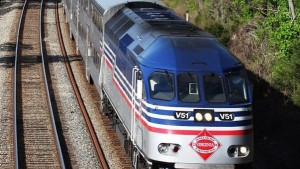
We are poised to have a huge growth in population and jobs. As we try to keep, and attract, new businesses we need to have a transportation base that is multi-modal. The future is one with less driving and more multi-modal options. This leads to a healthier environment where everyone can thrive.
